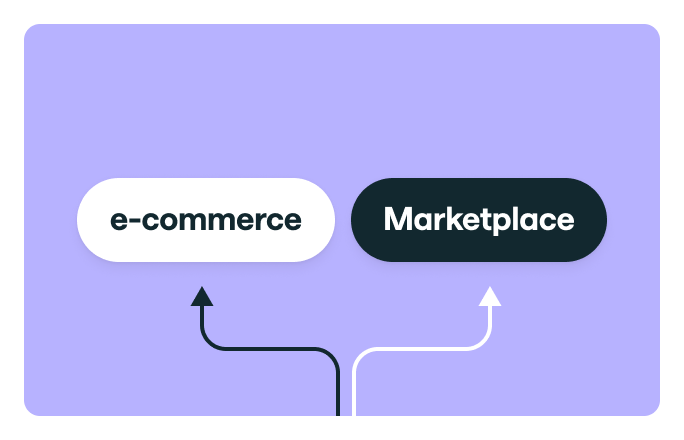E-retailers riding the wave to second-hand success
We’ve all seen the glossy campaigns and tabs on our favorite e-commerce sites... From Second Show on Showroomprivé to 2nd Life on Boulanger, second-hand, pre-owned, pre-loved and even recommerce items have been completely repurposed, rebranded, repackaged, and are having a moment on traditional e-retail channels!
Gone are the days when purchasing pre-owned goods came with a stigma. Andy Ruben, Founder and CEO of Trove, predicts that every brand will have resale as part of their distribution channels by 2032.
But how did we get here? What are the contributing factors to this shift from thrift to chic? And how can e-retailers properly harness this potential?
The second-hand retail marketplace revolution
Consumers cite three main reasons for preferring second-hand: to save money, to create less waste and to have access to a wider selection of products. They have grown used to having an abundance of products and price ranges to choose from, with marketplaces in particular playing a determining role in this reshaping of consumer habits.
Several reasons account for this paradigm shift. First of all, resources are running low; energy and shipping costs are up and overall global supply chains are facing shortages and delays. This has forced manufacturers and retailers to adopt a more resilient approach by repurposing pre-owned goods to be able to continue to meet consumer demand. Furthermore, faced with growing criticism of their pollutant practices, certain industries, notably one of the most polluting industries, the fashion industry, are adopting resale as a way of cutting down on their environmental impact.
This, as it turns out, represents a profitable new revenue stream for both brands and retailers. Because most goods sold second-hand are usually cheaper than when sold new, customers are more liable to consume products they previously would not have even considered or been able to afford. 58% of consumers say secondhand has helped them in some way during a time of inflation. Looking ahead, 25% of consumers say they'll consider buying more secondhand products if prices in apparel, footwear, and accessories keep rising, for example.
So it’s also about inclusivity: by opening up their online stores to a second-hand offering, e-retailers can target a broader audience, with the argument of price accessibility.
And finally, these sustainable practices have promoted the circular economy. More widespread availability and publicity of pre-owned goods on traditional retail sites has indeed helped regear mindsets towards accepting and even embracing the trend, one which is completely aligned with growing concerns about waste. Consumers are more inclined to buy pre-owned products, not to mention sell theirs to earn money from previous purchases rather than throwing or giving them away.
The opportunities and challenges of operating a second-hand retail marketplace
There are a number of advantages to adding a second-hand offer to an existing retail site:
- Expanding your catalog
- Broadening your consumer base by attracting more budget conscious buyers
- Creating a new form of engagement by aligning with more sustainable shopping trends and regulations
- And ultimately, generating new revenue streams
However, it also means finding the right solution to manage a whole new parallel payment flow. Retailers operating a commercial website will already have an acquiring payment services provider that allows their site to accept payments, but marketplace payment flows are a completely different matter, which is why there are different types of PSPs based on an e-commerce site’s needs. On a resale marketplace, payments no longer go from buyer to retailer. They flow from buyers to one or several merchants, with commissions taken along the way, in exchange for visibility on a retailer’s website.
For the buyer, retailers have to map out that perfect customer journey. It’s up to each retailer to determine how separate or integrated they want the second-hand segment of their catalog to appear, but adding extra hurdles at the payment stage can cause unwanted friction that will ultimately deter shoppers. From shopping cart to checkout, and of course logistics management should be seamless and a white-label payment solution can definitely help achieve that goal.
For the merchant, retailers have to configure a clear and efficient onboarding process, and guarantee safe and secure pay-outs. As part of their responsibility in handling third-party payments, marketplaces are subject to specific regulatory requirements, including customer due diligence, known as “Know Your Customer”. This can be a complex and time consuming process, but a retailer can delegate this task to a PSP that can automate the onboarding phase. A professional service provider will not only provide significant operational gains, but will also ensure merchants are who they say they are. In second-hand, the issue of authenticity or reliability of products is crucial. Counterfeit or poorly reconditioned goods can cause irreparable reputational damage to a platform, not to mention incur hefty chargeback fees.
Technology and online marketplaces are the main drivers of the global second-hand phenomenon. It is one that spans all generations. With already one foot in the e-commerce door, retailers need the right marketplace payment solution to allow them to confidently build the resale platform that matches their vision.



